Facial Hair Transplant and Beard Restoration
- Facial hair loss, or beard hair loss can occur due to various factors including:
Genetics: Your family history plays a significant role in determining the thickness and distribution of facial hair. Some individuals may have a genetic predisposition to sparse or patchy beard growth while others may be natural born lumberjacks and have more facial hair than they know how to handle or style. - Hormonal Imbalances: hormonal fluctuations, such as those experienced during puberty, can impact the development of facial hair or lead to reduced beard growth.
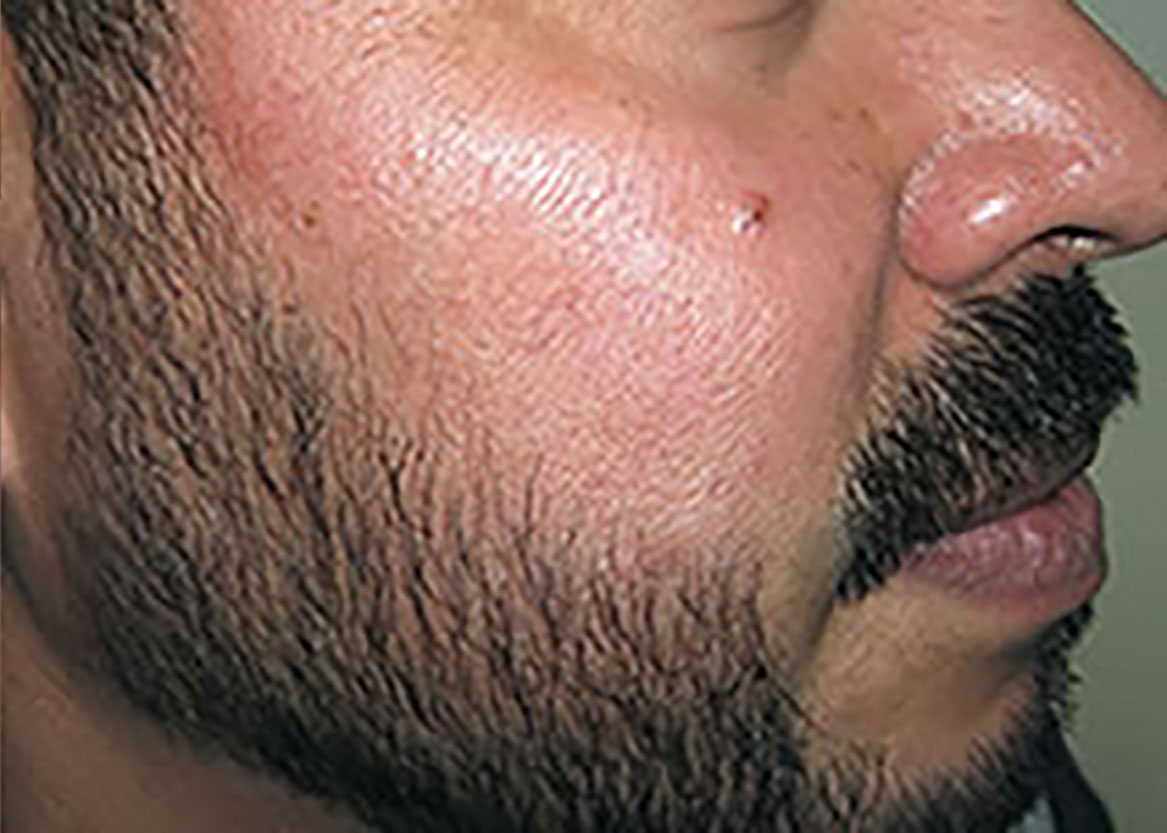 AFTER
AFTER
 BEFORE
BEFORE
- Scarring: Trauma, burns or skin conditions like alopecia areata can cause hair loss or scarring in the beard area, resulting in permanent hair loss. Cleft palate reconstructive surgeries, which are performed to correct congenital defects of a split or opening in the roof of the mouth and sometimes the upper lip, often leave a scar from the base of the nose to the top of the lip. Because hair can be successfully transplanted through scars, it is commonly used for disguising scars from cleft palate surgeries, burns, and other traumatized or scarred areas of the face.
- Medical Treatments: Certain medical treatments, such as chemotherapy or radiation therapy, can cause temporary or permanent hair loss, including eyebrow hair and beard hair. Ocular cancer treated with radiation most likely will cause eyebrow hair loss which may be replaced and restored with eyebrow transplantation. Identifying the underlying cause of facial hair loss is crucial for determining the most appropriate treatment plan.
The Facial Hair Transplant Procedure
Facial hair transplant surgery is a specialized procedure designed to restore or enhance facial hair where it is sparse or absent. The procedure follows the same process and steps as hairline and bald spot hair restoration surgeries, in that the donor hair is harvested from the safe donor zone on the back and sides of the head. The difference is that the harvested hair is transplanted into the desired areas of the face like the cheeks, chin, and brows.
Here are the steps of the facial hair restoration:
- Facial Hair Consultation: Everything starts with the consultation! During the initial consultation, the surgeon assesses the patient’s medical history, the amount of facial hair loss along with the characteristics of the donor hair, and how much is available to safely harvest for the facial hair transplant procedure. The surgeon will also discuss your aesthetic goals and determine your candidacy for a beard hair transplant, mustache hair transplant, sideburn hair restoration, or eyebrow hair transplant. Connecting your mustache hair with goatee hair to establish a more complete beard look, is another popular hair transplant procedure.

- Donor Hair Harvesting: Hair follicles are harvested from the donor site from the back of the scalp where hair is abundant and genetically resistant to DHT the hormone that causes hair to miniaturize and ultimately stop growing. Donor hair may be harvested using either Follicular Unit Excision and Extraction (FUE) or strip harvesting with Microscopically Dissected Elliptical Excision (MDEE®).
- Recipient Site Preparation: The hair surgeon creates tiny incisions at the proper angle, direction, and orientation in the recipient area of the beard, mustache, or brows. The incisions are artistically placed to mimic the natural direction and angle of normal beard hair growth or facial hair growth.
- Placement of the Hair Grafts: The harvested hair follicles are gently and meticulously placed into those recipient sites, matching the angle, direction, and orientation of the incision, ensuring the proper management of the precious donor hair as well as a natural-looking facial hair transplant result.
- Post Operative Care: Patients are provided with instructions for post-operative care of their donor zone and the newly transplanted hairs and area with post-op visits scheduled at 6, 9, 12, and 18 months to monitor progress.
The Benefits of a Beard Hair Transplant and Facial Hair Restoration Procedures
Beard hair transplant and mustache hair transplant surgery offer numerous benefits for men seeking to enhance their facial appearance or those transitioning to FTM who desire a more masculine appearance. Other benefits include:
- Natural-Looking Results: beard hair transplant surgery utilizes the patient’s own hair follicles to create a natural, seamless integration with existing facial hair.
- Camouflages Scars: hair transplant surgery can successfully camouflage scars from cleft palate surgery, other cosmetic surgery procedures, and even burns..
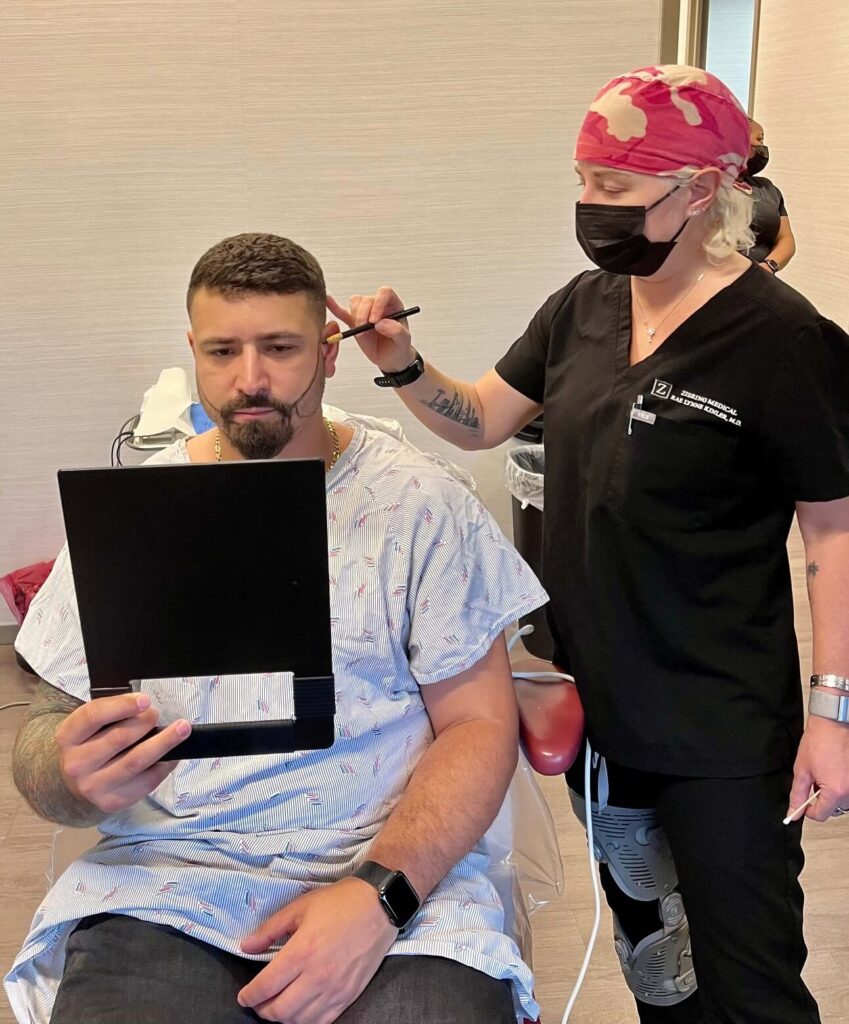
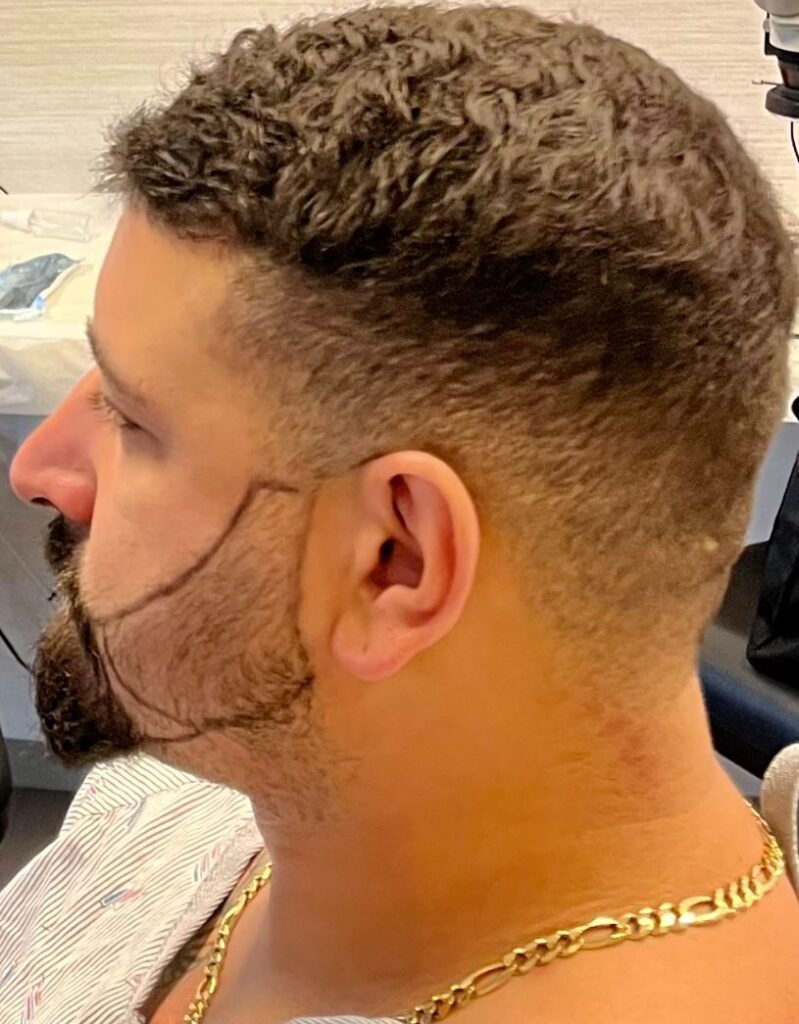
- Customized Treatment: All facial hair transplant procedures are tailored to address specific areas of patchiness or thinning. Our Ziering Surgeons take time to design your facial hair restoration to bring balance and symmetry to your facial features and enhance your masculine appearance.
- Permanent Solution: Unlike temporary solutions such as topical medications, beard transplant surgery provides a long-lasting solution for hair loss. It may also be combined with hairline restoration procedures if there is sufficient donor hair available. Your transplanted beard can be groomed and styled just like your existing facial hair, too!
- Enhanced Self-Confidence: A fuller and more defined beard can lift one’s sense of self and personal confidence, empowering individuals to feel more masculine and attractive
Frequently Asked Questions (FAQs)
Before AND AFTER RESULTS

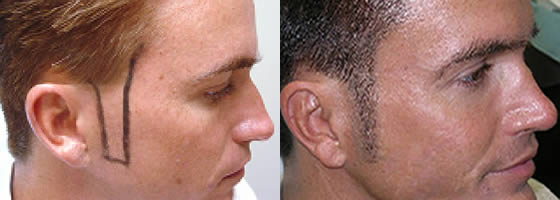

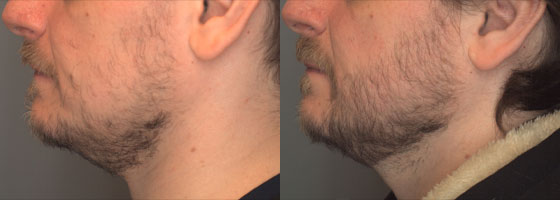
Are you ready for a patchy-free beard?
Are you ready for a patchy-free beard? If you are considering beard or facial hair transplant surgery, consult with a qualified, board-certified hair doctor to discuss your best treatment options and take that next step to a revitalized and more confident you.


